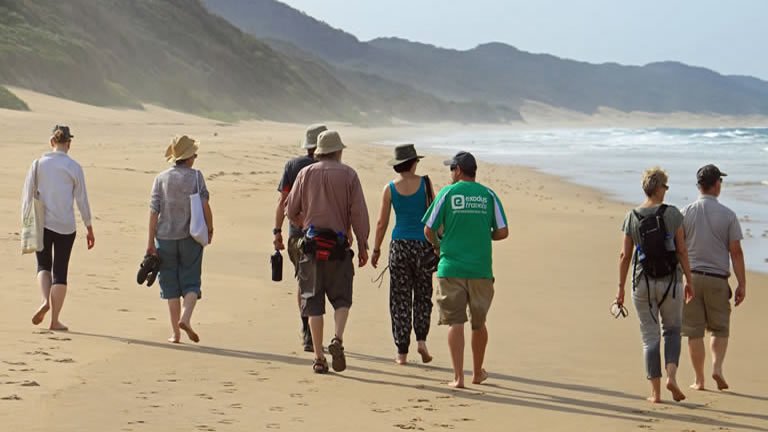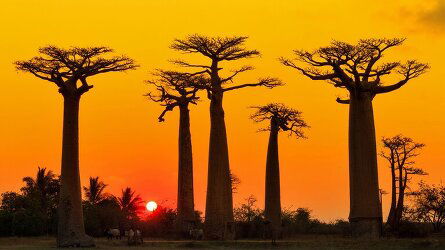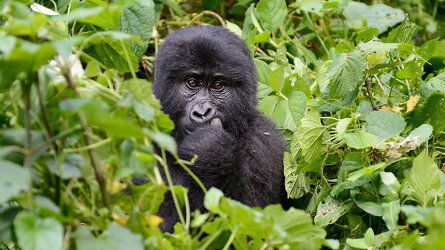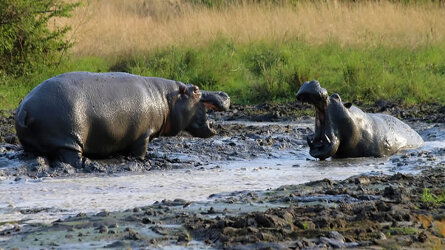
Overview
Itinerary
We meet at the start hotel before collecting the rest of the group from the airport. We then transfer to the town of Graskop, which perched on the edge of the Mpumalanga escarpment. It is a long drive but we stop at regular intervals to take in the spectacular scenery and to visit the well-known Mac Mac Falls. En route we travel through the highest town in South Africa, Belfast (6,465ft/1,970m), and the scenic Long Tom Pass. We also take the opportunity to stock up on supplies such as drinks and snacks. Stay: Mogodi Lodge (or similar).
We drive through some beautiful countryside this morning, starting with the stunning views at God's Window. If we are lucky, God's Blanket may be down, a majestic cloud inversion that gives you the feeling of being on top of the world. We visit the fascinating rock formations at Bourke's Luck Potholes, before stopping for breathtaking views over Blyde River Canyon, the third-largest canyon in the southern hemisphere.
In the afternoon, we enjoy our first walk of the itinerary, a loop that includes the Leopard, Guineafowl and Kadishi-Tufa trails. Along the way, we have further views on Blyde River Canyon, walk through forest and stop at Tufa Waterfall. Most of the trail is on a good path, but there are some sections of small rock steps, roots and a few small stream crossings. Stay: Blyde Canyon Forever Resort (or similar) (B).
After breakfast, we drive to a private game reserve in the Greater Kruger area, our base for the next two days. We have time to relax and enjoy the views from camp before heading out for an afternoon game drive in search of the resident buffalo, zebra, elephant and the elusive leopard. Stay: Makuwa Safari Lodge (or similar) (B/L/D).
We have an early start this morning, as we drive 40 minutes from our accommodation and meet our specialist guide in Hoedspruit. It's then a short drive to Pridelands, a wildlife-rich private reserve that forms part of the Greater Kruger National Park and is open to the Kruger. Here we spend three hours, at least two of these walking while following animal tracks and the rest of the time on an open game drive, searching for the iconic wildlife of Africa.
The walk is likely to be around 3mi (5km) but this changes from trip to trip. We walk in the early morning before the heat of the day but it can still get hot in the African Bush. Wear proper walking shoes and trousers (pants). The afternoon is free to relax or go an optional game drive. Stay: Makuwa Safari Lodge (or similar) (B/L/D).
We head to Kruger National Park, justifiably one of the most famous wildlife parks in the world. It is also one of the oldest, established by the South African president Paul Kruger in 1898. It has arguably the greatest variety of animals of any park in Africa, with lion, leopard, elephant, buffalo, black and white rhino, plus cheetah, giraffes, hippos and many species of antelopes and smaller plains game.
We game drive (in our vehicle) through the park where we have an excellent chance of seeing a wide variety of wildlife. We arrive at our Kruger campsite in the late afternoon just before the camp gates close to maximise our game-viewing chances. Stay: Skukuza or Pretoriuskop camp (or similar) (B/L/D).
We get up before sunrise for a game drive at, arguably, the best time of day for game-spotting. We return to camp for breakfast and to pack up before moving onto a new country: Eswatini (Swaziland). We leave the park at around lunch time and have a short stop to resupply before crossing the border into Eswatini (Swaziland). We drive (three hours) to the hilly Malolotja Nature Reserve, where we spend a relaxing evening in the cabins ready for a long walk tomorrow. Stay: Malolotja Cabins (or similar) (B/D).
Today we explore the reserve on foot, taking the most picturesque route. We start from the cabins, enjoying a warm-up walk along a dirt track to the Logwala viewpoint. From here, we have a fairly steep descent to the Malolotja Waterfall viewpoint. We then have a picnic lunch by a stream and, if the water levels are high enough, a swim.
After, we continue on the path, following a contour line, before a short climb brings us to the Silotfwane viewpoint. It's then back through the beautiful valley, crossing a small stream, back to the Logwala viewpoint and onto the cabins. More than 280 bird species have been spotted in this reserve, as have many antelope species, zebras and wildebeest. You will have great views and the chance to spot various eagles or even the very rare bald ibis. Stay: Malolotja Cabins (or similar) (B/L/D).
Today we head out of Eswatini (Swaziland) and back into South Africa. On the way, we visit Swazi Candles, where we can watch the artisans make their candles, plus there's a tearoom and separate craft market with wood and stone carvings and batiks. After, we head south through rural Eswatini (Swaziland), before entering South Africa and travelling to St Lucia.
This small town is both by the Indian Ocean and by Lake St Lucia and is known for its crocodile and hippo populations (hippos are sometimes seen wandering in town). The lake itself is the largest estuary in Africa and a haven for birds. The proximity to the ocean means it is possible to go swimming and even whale watching (June to November). Stay: Shonalanga apartments (or similar) (B/L).
Getting up early, we head down to the dock and board a boat on the nearby lake. We spend two hours exploring by boat with an excellent chance of seeing some of the many resident hippos, crocodiles and fish eagles. We return to our apartments for breakfast and then pack a picnic lunch for the short drive to Cape Vidal, a long stretch of beach along the Indian Ocean.
Along the way, we stop at bird hides and there's a small chance of spotting rhinos. We spend the afternoon relaxing on the beach with a chance to visit Mission Rocks, where turtles sometimes congregate. Stay: Shonalanga apartments (or similar) (B/L).
Leaving the coast behind, we head 185mi (300km) towards the battlefields where the British and Zulus fought in 1879. After lunch, we go on a four-hour hike along the fugitive trail, which follows the route taken by the British survivors from the battle of Isandlwana to Rorke's Drift. Our trail takes us through acacia bushveld, crossing a small river and the Buffalo River crossing point.
The British and colonial force was armed with rifles, mountain guns and rocket battery and were facing 20,000 Zulu warriors armed with spears. By the end of the battle, there were only 65 British and colonial survivors. Anyone who would prefer to sit out of the walk can take a bus transfer to Rorke's Drift, where there is a museum with exhibitions on the battle. After our hike, we transfer 31mi (50km) to our lodge for the night. Stay: Amabutho Warrior Lodge (or similar) (B/L).
We continue our journey to the beautiful Royal Natal National Park, known from being home to the distinctive natural Amphitheatre. The Drakensberg is a basalt escarpment forming the border between Kwa-Zulu Natal and Lesotho and continuing into the Free State. It means Dragon Mountains, but the Zulu named it Quuathlamba (the Barrier of Spears) – a more accurate description of the sheer, forbidding, jagged escarpment.
This afternoon, we go for walks in the local area from our lodge where we are staying. There are several walks we can choose from such as to Policeman's Helmet or to some bushmen paintings. Stay: Thendele Chalets (or similar) (B/L/D).
Today, we follow the Thukela River, past protea trees (the national flower of South Africa as well as the name of their cricket team), indigenous yellow wood forest and mountainous grasslands to the natural Amphitheatre and Tugela Waterfall viewpoint. The walk, which involves some boulder hopping and crossing a dry riverbed close to the end, takes us into the heart of Royal Natal National Park and offers stunning views of the dramatic northern Drakensberg Mountains. Stay: Thendele Chalets (or similar) (B/L/D).
As the bus takes our luggage to our next lodge, we head along trails by foot. The start of our route follows a contour line and takes us via Tiger Falls with excellent views over Royal Natal National Park. From here, we continue to a lookout rock for photographs over the valley, before crossing the Mahai River and making our way to Gudu Bush.
We then arrive at a split in the path and have a choice of two routes up the mountain. Typically, we ascend through a crack and then onto the Bushmen Gate and Witsieshoek. Time permitting, and if the group are fit enough, we take the alternate route to see the Mahai Falls en route to Witsieshoek. Overall, the paths are well maintained and there is a section of short wooden ladders to climb. Stay: Witsieshowk Lodge (or similar) (B/L).
In the morning, we drive 9mi (15km) along a poor road to the trek start point at the Sentinel Gate.
Upon arrival, we register with the rangers and are joined by a local mountain guide. From here, we trek along the edge of the mountains, possibly chaperoned by mountain baboons or, if we are lucky, by the resident bearded vultures, up to the ladders, which take us to the top (9,515ft/2,900m). We then follow the Thukela River to the edge of the Tugela Falls, the highest waterfall in Africa, and enjoy views across the amphitheatre and our previous day's route.
We then walk back to the vehicle and transfer 9mi (15km) to our lodge. The hike should take about six hours including stopping for lunch. Stay: Witsieshoek Lodge (or similar) (B/L).
There is an optional three-hour final morning walk in these wonderful mountains, with a local guide, before driving back to Johannesburg in time for our flight this evening. The trip ends upon arrival in Johannesburg. Please note: If you are organising your own flights, these should not be earlier than the group flights due to the distance we need to travel back to the airport (B).
Trip Inclusions
- Embark on several days hiking in the spectacular Drakensberg Mountains
- Explore Royal Natal National Park and the amazing rock formation, the Amphitheatre
- Walk through the mountainous terrain of Eswatini (Swaziland)
- Take morning and afternoon game drives in Kruger National Park
- Enjoy a game walk and drive in a private game reserve
- Eight days of walking
- A bush walk
- Mixture of spotting wildlife and walking
- 2 Superior nights (lodge), 8 Classic nights (chalets/lodges), 4 Simple nights (chalets)
- All breakfasts, 11 lunches, seven dinners
- All transport and listed activities
- Tour leader throughout
- Itinerary and inclusions are subject to change
- Price is for land, cruise and internal flights as specified. Flights not specified are not included
- Altitude max: 9,515ft (2,900m); average: 4,100ft (1,250m)
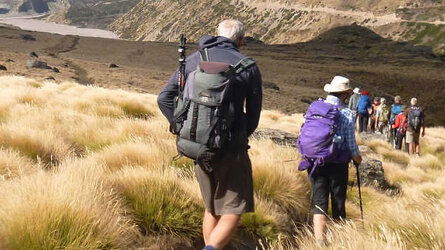
Hit the trails with Exodus - from challenging peaks to leisurely coastal and countryside walks. Read more
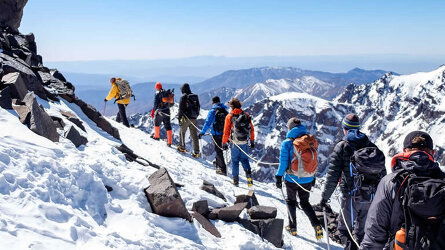
Exodus chooses their Leaders carefully. Professional, dedicated and are passionate about sharing their home countries. Read more
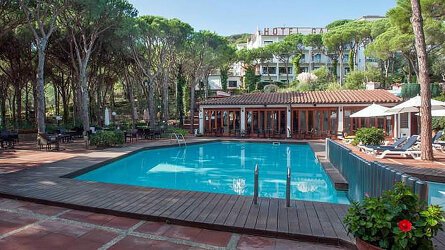
Wherever possible, Exodus chooses properties that are locally owned and that reflect the area you are visiting. Read more
Availability
 USD
USD
A definite departure means minimum numbers have been reached for this departure to operate. Your Global Journeys Travel Advisor will check the availability of your departure date when you enquire. Additional savings may apply. We guarantee the lowest price in USA. T&C’s apply.
Tour & cruises prices are per person. Prices shown have savings applied, are subject to availability and may be withdrawn at any time without notice. Pricing and trip details are correct at this point in time, however are subject to confirmation at the time of booking and are subject to change by Exodus. For cruise itineraries, cabin images are sourced from Exodus. These should be treated as indicative only. Cabin inclusions, upholsteries and room layout may differ to the image(s) shown depending on the ship selected and your sailing dates.
